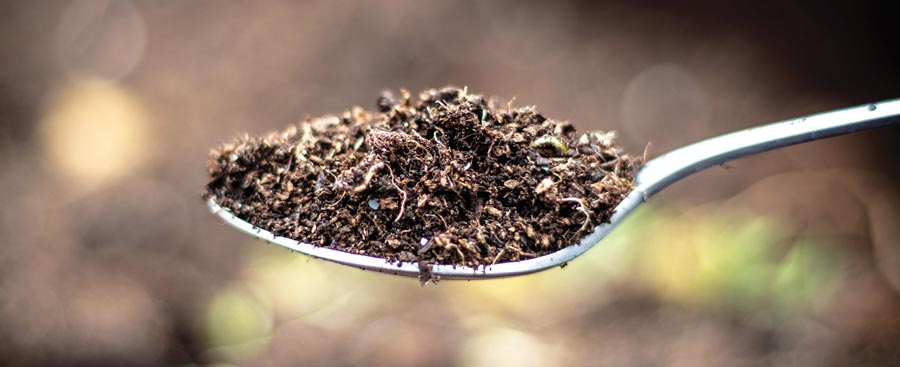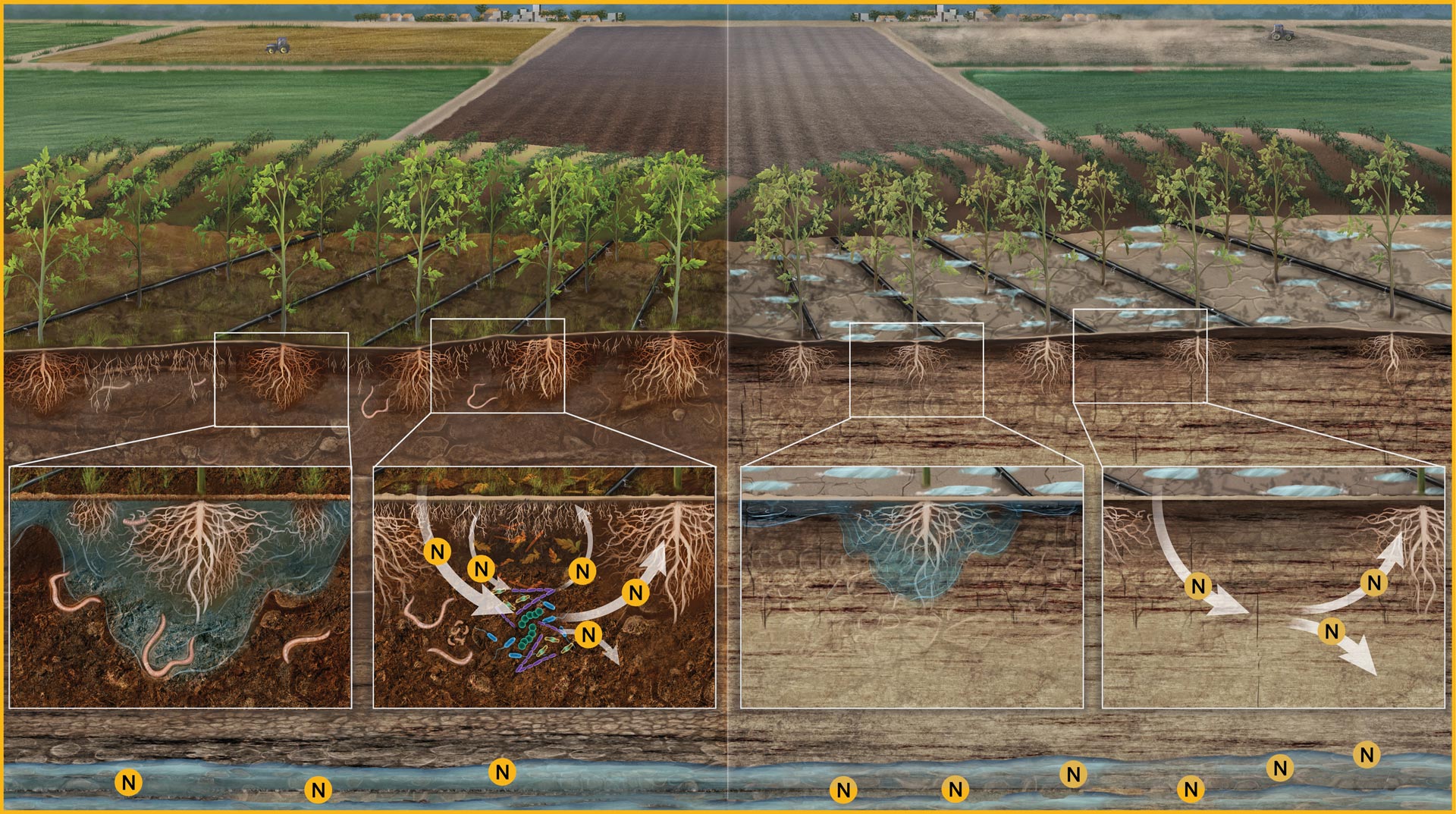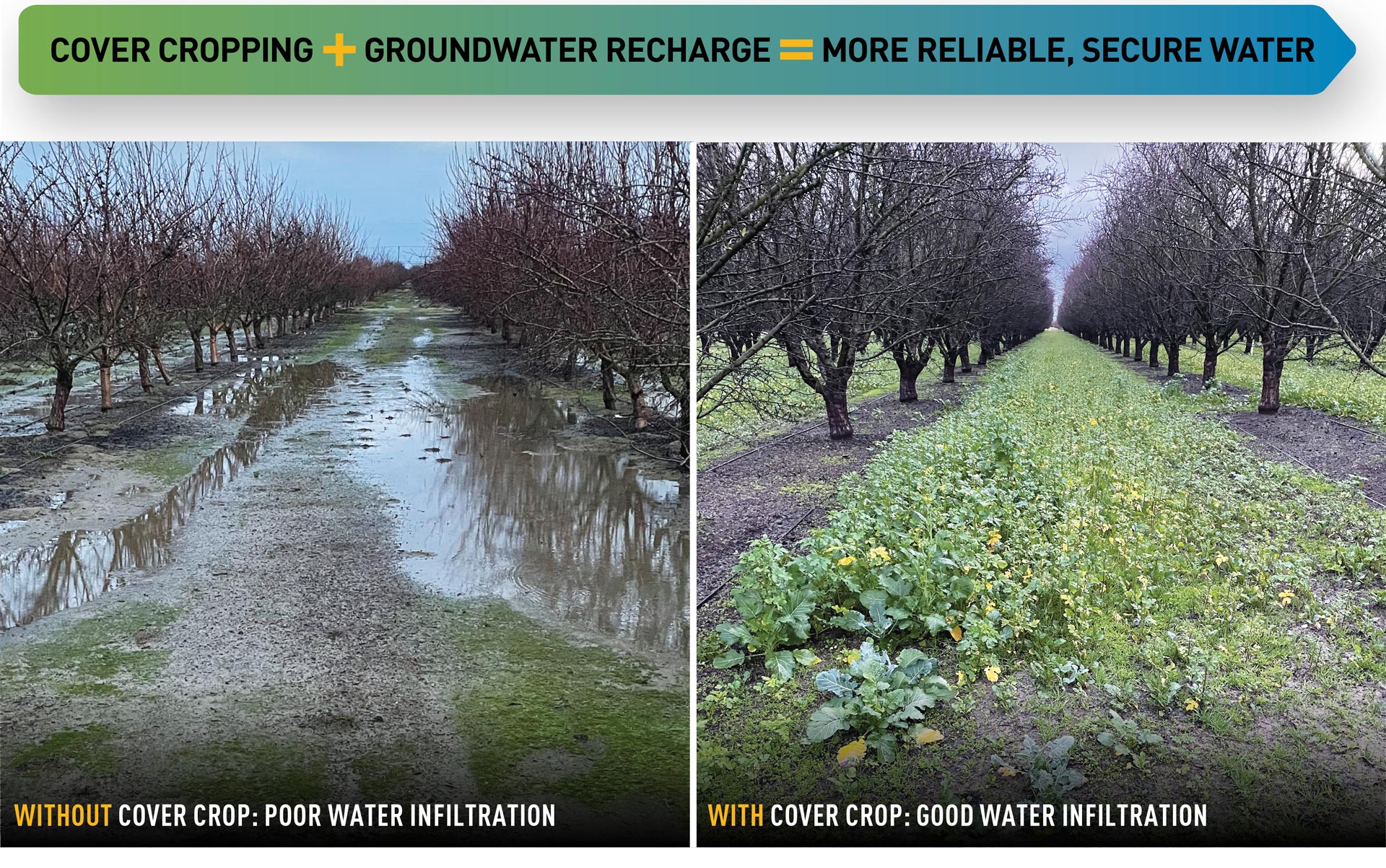
For over 30 years, Sustainable Conservation has scaled time-tested solutions and launched new initiatives. This spring, we’re excited to announce our new Solutions in our Soil program to boost California’s regenerative agriculture momentum and build climate resilience for our state.
Why soils if we focus on water? It can be easy to get siloed in California water and agriculture, but we can’t grow the food the nation needs without healthy soil or sufficient water. These critical resources go hand in hand, and there’s real potential for improving both beneath our feet.
In our work to enhance water quantity, water quality, and ecosystem health for all, we’ve realized that farmland soils play critical roles in each of these goals. Healthy soils not only help us improve water use efficiency, and capture and store more water when it’s available, but also improve the quality of water that’s returned to aquifers, rivers, and streams.
Advancing soil health in California was made for Sustainable Conservation’s approach: with only 5% of our state’s farmers doing things on irrigated agriculture like planting cover crops, applying compost, or switching to low-impact tillage, we want to understand why such potential isn’t possible in the current regulatory, economic, and equity landscape.
The answer (no surprise!) is complicated, but that doesn’t mean the problem is unsolvable. That’s why we’re here: to build trusted partnerships, innovate solutions, learn continuously, and persevere.
We know that healthy farms and soils are foundational to our mission, and integral to our vision for truly sustainable progress.


Soils underpin all that we do at Sustainable Conservation – whether it’s habitat restoration, groundwater recharge, irrigation and nutrient management, or rethinking agricultural waste.”
Ryan Flaherty


Sarah Castle explains: On the left, we see a thriving soil ecosystem with lots of roots and organic matter in the soil, and microbes transforming organically held nitrogen into its mineralized form so plants can absorb it when they need it. Nitrate 🅝 leaching to groundwater is reduced, and the soil retains more water closer to plant roots to potentially reduce irrigation demands.
On the right, we see a struggling ecosystem: compacted and degraded soils that can’t absorb rain or water applied, causing runoff and erosion. Nutrients are mobile, not held and recycled in the root zone. Thus, all that nitrogen moves down, where it gets flushed into our groundwater – further contaminating this precious resource and impacting local communities.



Curious how soil health and the practices that support it fit into the landscape of what we do every day? Look no further than groundwater recharge – a focus area of ours that has gotten some much needed attention in our 2023 drought-turned-deluge.
Cover cropping is one path to improve our soils’ capacity to absorb water. Planted in between cash crops, cover crops’ roots create more open spaces for water to move deep into the soil profile. Cover crops also shield the ground from heavy rain impacts, slow runoff velocity, and hold soil particles in place. They can also make a difference when growers want to recharge groundwater, because they allow more water to seep into the ground more quickly.
But cover cropping requires capital, time, labor, and some calculated risk. While it might be easier for a large-scale farm to experiment with cover crops between their other plantings, it’s not so simple for a farmer who rents land, or whose cash crops might make or break their farm year over year.
And, when a grower wants to try something else like groundwater recharge, they have to be ready when water comes – which means days of careful preparation, additional labor costs, and a lot of coordination to make sure they can flood their fields when water’s delivered.
Add trying lower-impact conservation tillage or introducing high-carbon amendments to prevent nitrate leaching – while complying with regulations to protect our water resources, and keeping local cropping and land conditions in mind – and it’s easy to see how difficult doing good for our soils or water can be.
But every challenge is also an opportunity, and our Solutions in our Soils team is excited for the work ahead.

You’ve trusted us for decades to build smart and lasting solutions to California’s most pressing environmental problems. Your partnership has kept us working, scaling that work, and discovering new and exciting nexuses where our toolbox of collaborative approaches can make a real difference. We’re launching Solutions in our Soil to enhance Sustainable Conservation’s award-winning programs that you already support: accelerating the pace and scale of habitat restoration, capturing and infiltrating water to boost our drought-critical groundwater supplies, and finding ways for dairy producers to protect water quality while utilizing the manure their cows produce as fertilizer for feed crops. Now is the time to join us – for our watersheds, for our food system, for our health, and for our future. Become a California Conservationist today!

Sustainable Conservation has the science, the credibility, and the management to build long-lasting trusting relationships that are key to getting cost-effective results that benefit the health of our rural communities. Working with them to increase our understanding of the relationships between soil health practices and water conservation will inform how we maximize our incentive grant investments to generate wins for both carbon sequestration and drought resiliency.”
Karen Ross
